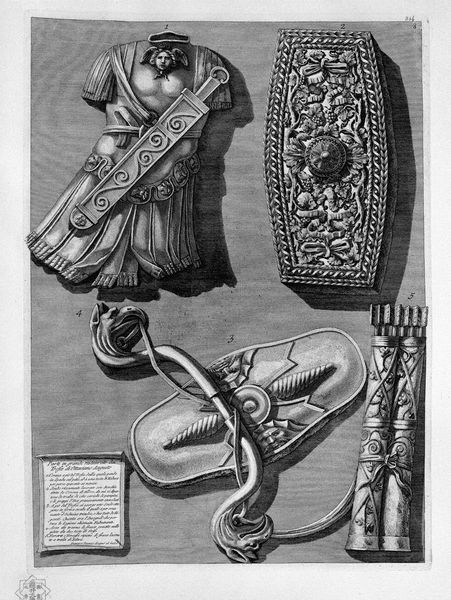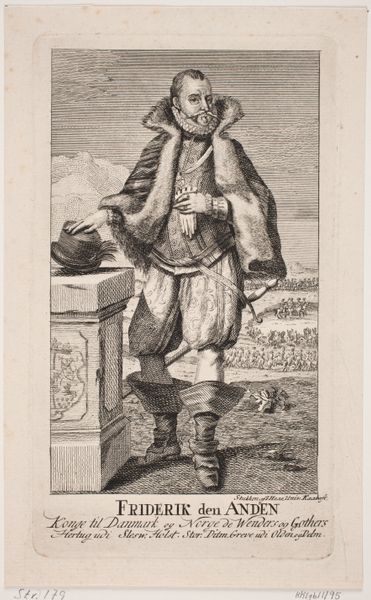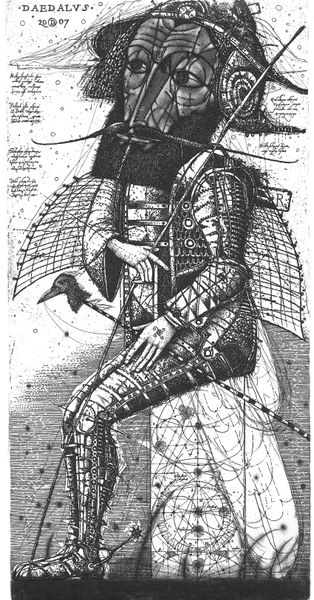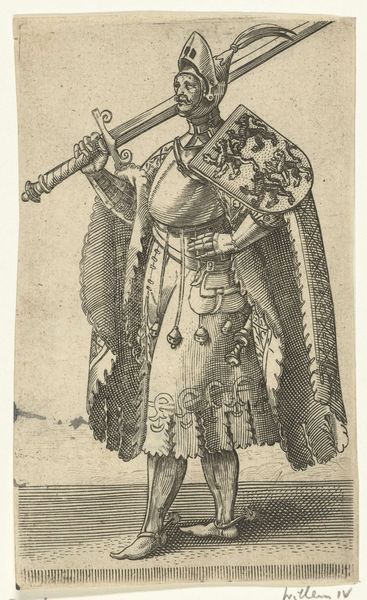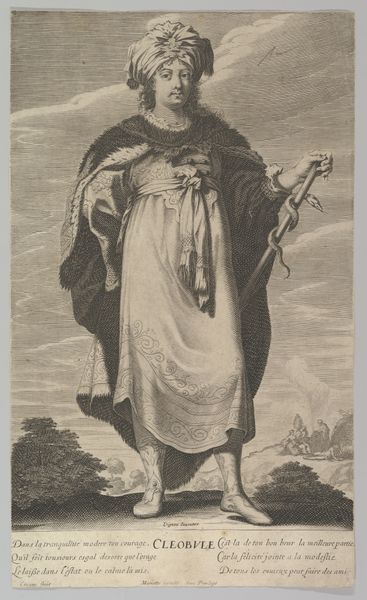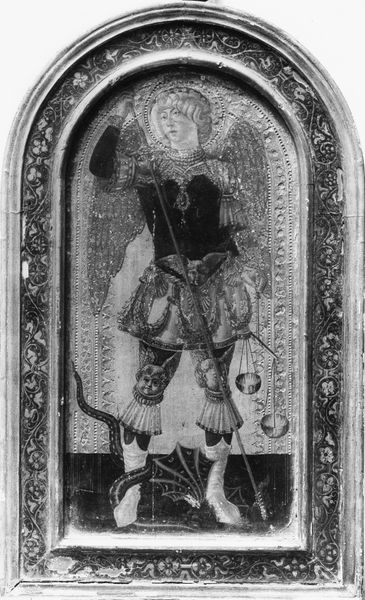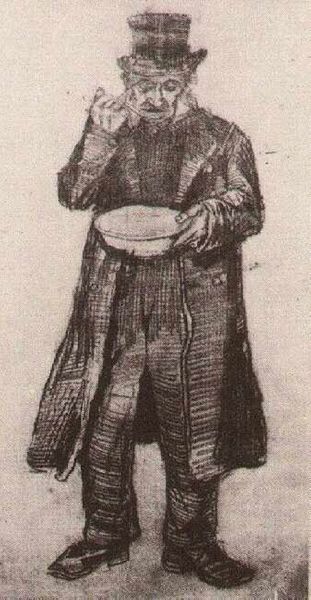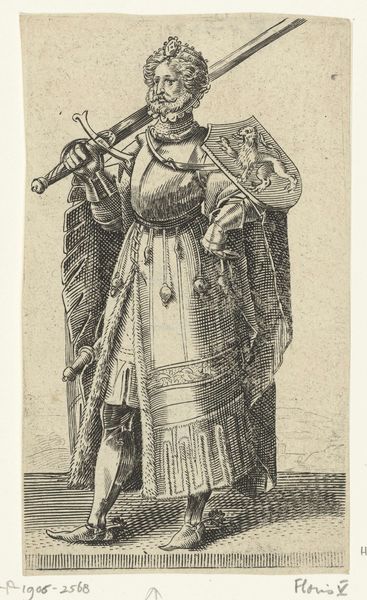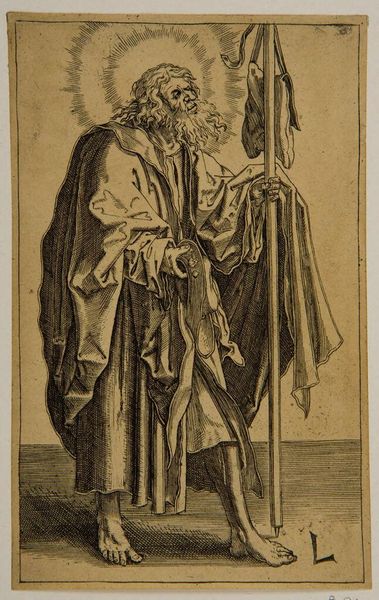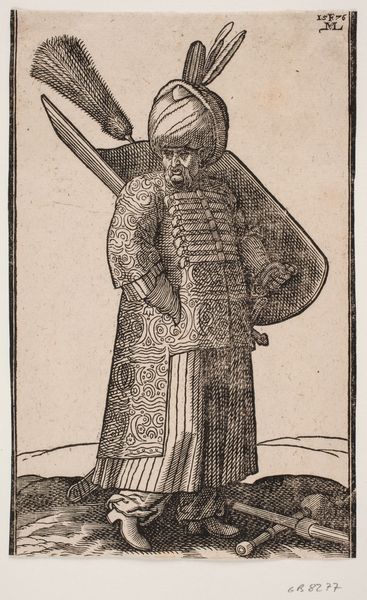
print, engraving
neoclacissism
form
romanesque
geometric
line
history-painting
academic-art
engraving
Copyright: Public domain
Giovanni Battista Piranesi made this etching of the Arch of Gallienus and the facade of the Church of St. Vito. Piranesi used etching and engraving, which involve coating a metal plate with wax, drawing through the wax to expose the metal, and then submerging the plate in acid. The acid bites away the exposed lines, which are then inked and printed. This process results in prints with fine lines and intricate details, capturing the textures and forms of the ancient armor, sword, and spear. The artist was fascinated by the material culture of antiquity, and its relationship to Rome’s history. The labor-intensive process of etching mirrors the craftsmanship involved in creating the armor and weaponry depicted, inviting reflection on the social and cultural significance of these artifacts. This reminds us of the vast amount of skilled labor that went into making each object. By focusing on the materiality and making of both the depicted objects and the print itself, Piranesi elevates our understanding of the intersection between craft, art, and historical context.
Comments
No comments
Be the first to comment and join the conversation on the ultimate creative platform.
